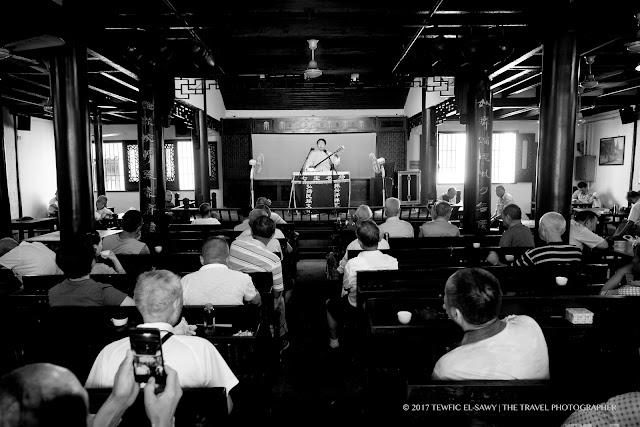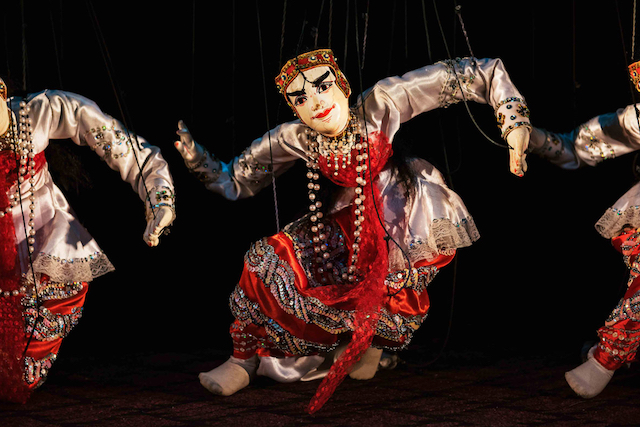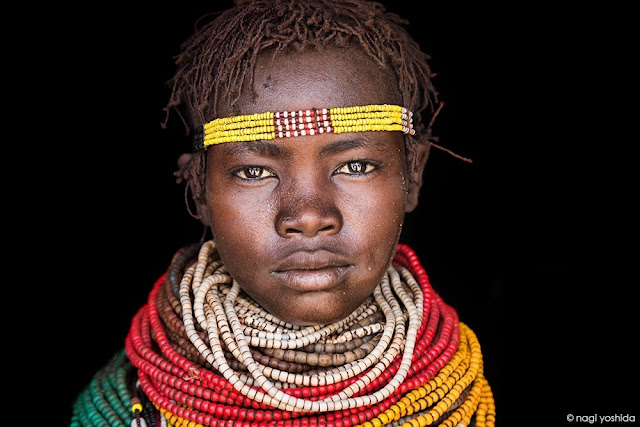Beyond The Frame | The Qi Bao Shuchang/Teahouse | Fuji X-Pro2
 |
| A shuchang in Qi Bao. Photo � Tewfic El-Sawy | All Rights Reserved |
Shuchang is a traditional teahouse where storytelling called "shuohua" is performed. Storytelling was one of the major forms of entertainment in the medieval cities of the Song period (906-1279), and contained both spoken and sung performances, and many of the themes told are still part of today's storytellers' repertoire.
It's in the old water-town of Qi Bao (???) that I walked in such a teahouse, and experienced a shuoshu storyteller performing his art of talking, joking, singing and acting; all accompanied by his three-stringed lute (pipa or sanxian). Most of the audience were elderly men who had paid around 2 yuan ($0.30) for a tea-pot and a place to snooze for as long as they want.
 |
| Teahouse patio. Photo � Tewfic El-Sawy | All Rights Reserved |
There were a handful of men playing cards or sleeping in the 'theater' room at first, however when the storyteller arrives, the benches quickly fill up with spectators. The asleep woke up to nod off elsewhere, but the card players continued their game ignoring the commotion.
The young storyteller was dressed in a long, salmon-colored chang paozi, the traditional male gown favored by storytellers. I figured that the almost daily performance lasts about 2 hours; from 2 to 4 in the afternoon and perhaps later in the evening.
I gathered that the audience must've heard these stories countless of times, and yet they frequently return...perhaps partly for the cheap tea, entertainment, the companionship and nostalgia for times past. With an entrance fee that low, there's absolutely no way that this teahouse is commercially viable... so it must have the support of the Qi Bao municipality or similar; perhaps on account that Chinese storytelling is also considered as an intangible cultural heritage, and receives subsidies.
The moment I stepped in the teahouse, I imagined it would a perfect spot to set up a sequel to The Girl of Nanjing thematic fashion-travel photo shoot, with a model dressed in a red qi pao languidly posing amongst the benches and tables of the teahouse. I'm confident the seniors at the card tables will lose their concentration rather quickly when that happens.
Whether the shoot happens there or not when I'm in Shanghai, I'm bound to revisit the old teahouse on Nanda Street in Old Qi Bao.
Whether the shoot happens there or not when I'm in Shanghai, I'm bound to revisit the old teahouse on Nanda Street in Old Qi Bao.
Unfortunately, I didn't have my audio recorder with me that day, nor did I have the presence of mind to use my iPhone to record the storyteller's performance. However, I did find an audio clip of another performance in a similar teahouse with a female storyteller.
The technical details for the top photograph are: Fuji X-Pro2 + 16-55mm. 1/25th sec Hand Held. f2.8. iso 640. Pattern Metering. Date: 2017-09-05 at 14:11:00 (Shanghai time). Post Processed Using Silver Efex.
The technical details for the lower photograph are: Fuji X-Pro2 + 16-55mm. 1/800th sec Hand Held. f2.8. iso 800. Average Metering. Date: 2017-09-05 at 13:30:00 (Shanghai time). Post Processed Using Silver Efex.
For more photographs at this teahouse, drop by my Shanghai: Incongruities in Monochrome gallery.


Comments
Post a Comment